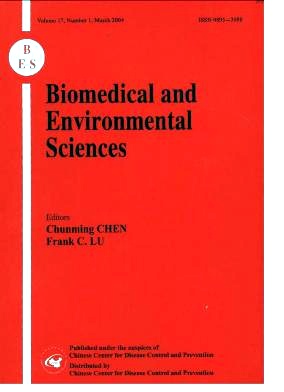Cu, Mn, Fe, and Zn Levels in Soils of Shika Area, Nigeria
-
Key words:
- Trace Metals /
- Soil Contamination /
- Cultivation /
- Grazing /
- Control /
- Nigeria
Abstract: Heavy metals presented in toxic amounts can become injurious to human health. In areas where there is a high level of human activities on soils (such as agriculture and grazing) studies are therefore required from time to time to monitor levels of such metals in the soils in order to identify the point in time when toxicity problems become real. The 英文摘要: of this paper is to determine the concentrations of some trace metals (Cu, Mn, Fe, and Zn) in soils under cultivation and grazing practices in Shika, a rural area of Kaduna state of Nigeria. Method In this study, soil samples collected from three different categories of locations (cultivated, grazed, and uncultivated/non- grazed serving as a control) across Shika area, Nigeria, were analysed for some trace metal levels (Cu, Mn, Fe, and Zn) using atomic absorption spectrophotometry. For each category, multiple sites were chosen to accommodate all possible intra-category variations, especially in terms of land use and management history and topographic characteristics. Topsoil (0-15 cm) and subsoil (20-30 cm) samples were collected from every site and analysed for the above metals. Averaged values of the metals for the three categories revealed that Zn is the most abundant metal, followed by Fe, then Mn and Cu the least. Results The results obtained indicate that the cultivation practices, and to a lesser extent grazing, in the area result in higher levels of all the metals than in the control, suggesting that crop immobilization of the metals from soils of the area is low, and that their systematic accumulation is taking place in cultivated soils of the area. Prospects of having elevated soil levels of the metals due to cultivation practices in the area therefore seem quite high. Conclusion On the basis of the results obtained, it was concluded that grazing and cultivation practices have in general caused some significant elevations in the bioavailable (i.e the plant available forms) levels of Zn, Fe, Mn, and Cu in soils of the area.
| Citation: | S.A.MASHI, S.A.YARO, A.S.HAIBA. Cu, Mn, Fe, and Zn Levels in Soils of Shika Area, Nigeria[J]. Biomedical and Environmental Sciences, 2004, 17(4): 426-431. |







 Quick Links
Quick Links
 DownLoad:
DownLoad: